The Israel-Hamas war in maps: latest updates

Roula Khalaf, Editor of the FT, selects her favourite stories in this weekly newsletter.
Latest situation
The Israeli army is advancing through the south and east of Gaza City, with fighting picking up in the Zeitoun and Jabalia neighbourhoods near al-Shifa hospital.
Israel’s western allies have advised caution as the army expands operations to the south of Gaza, where the IDF had initially told civilians to flee to as it invaded from the north.
The US has asked Israel to keep operations in the south “targeted and precise” to avoid civilian casualties and allow people to move to safe areas, a person familiar with the discussions said on Saturday.
But Israel’s defence minister Yoav Gallant said on Saturday that all of Gaza would soon feel the “IDF’s lethal force”, according to a recording of his comments broadcast on Israel’s Kan Radio.
The army has declined to comment on leaflets found in Khan Younis, southern Gaza, demanding Palestinians leave their homes immediately.
The expanded military operations in Gaza come as Israeli forces scoured al-Shifa hospital for evidence to support claims that Hamas has built a vast underground command and control centre underneath it. Hamas denies the claims.
The IDF has so far found a small cache of weapons, radios and a laptop as well as the entrance to a tunnel, according to videos released by Israeli forces. The IDF said on Sunday evening that it had investigated the 55-metre tunnel, which the military says was found hidden under a booby-trapped pick-up truck loaded with weapons. The tunnel led to a blast door and had been fortified in various ways, the IDF added.

Israel’s incursion in Gaza
Israel’s defence forces launched air and land offensives in Gaza after Hamas’s brutal October 7 attack in southern Israel.
Hamas killed about 1,200 people, according to Israeli officials. The militant group, which has controlled Gaza since 2007, also seized about 240 hostages.
The IDF’s response has killed more than 11,100 Palestinian civilians, according to Gaza’s Hamas-controlled health ministry. Officials have not been able to update the death toll since last week because of a communications blackout and say at least 3,000 people are buried under the rubble of destroyed buildings.
Since launching its incursion, Israel’s military has been tight-lipped about how many troops it has committed to its biggest operation in years and about where they are now.
But data tracking the movement of Israeli forces shows them tightening their hold on Gaza City and surrounding al-Shifa hospital.

Satellite imagery published by Planet Labs from October 31 also shows a significant invasion.
After they breached the barrier wall in at least six places, vehicle tracks show how Israel’s columns cut through the sparsely populated farmland to the south of the border, before making their way deeper into Gaza towards more populated areas.

Aid agencies and foreign diplomats have expressed concern over the humanitarian situation in Gaza, including insufficient fuel to keep hospitals and communications networks running.
Gaza’s sole power plant went offline on October 11 after it ran out of fuel, with the outage captured by night-time satellite imagery.
Satellite images also show the toll the war has taken on built-up parts of Gaza, with dozens of craters in residential areas and entire neighbourhoods destroyed.
October 7 — how events unfolded
As much of Israel slept, Hamas militants launched an unprecedented, multipronged dawn assault on the country from the Gaza Strip. The Middle East’s most powerful security force was caught off guard.
Launched on the Jewish holiday of Simchat Torah, the assault began in the early hours with thousands of rockets fired at Israeli towns and cities. The barrage set off warning sirens across the south and centre of the country, sending citizens fleeing to air-raid shelters.
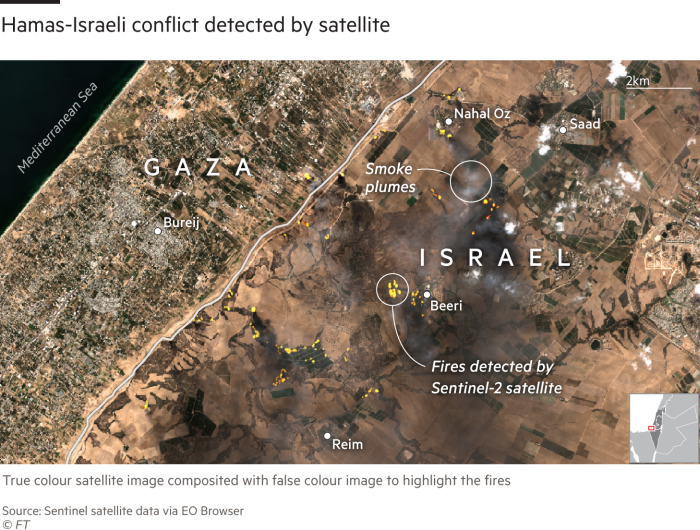
Israel’s military said Gaza-based militants launched more than 4,500 rockets over the weekend. Many were intercepted by Israel’s Iron Dome defence system, but satellite imagery showed fires and plumes of black smoke rising from some locations that had been hit.
Hundreds of Hamas fighters simultaneously attacked by land, air and sea, repeatedly breaching the fortified barrier between Gaza and Israel.

Images and videos showed motorbikes carrying armed militants riding through a hole in a wire fence along the border and a bulldozer destroying part of the barrier. Bombs, rockets and drones could also be seen blowing up the fence as well as defensive positions.

Militants used motorised paragliders to attack the Supernova music festival, not far from the Gaza border, flying in and turning the two-day rave into the site of a massacre.
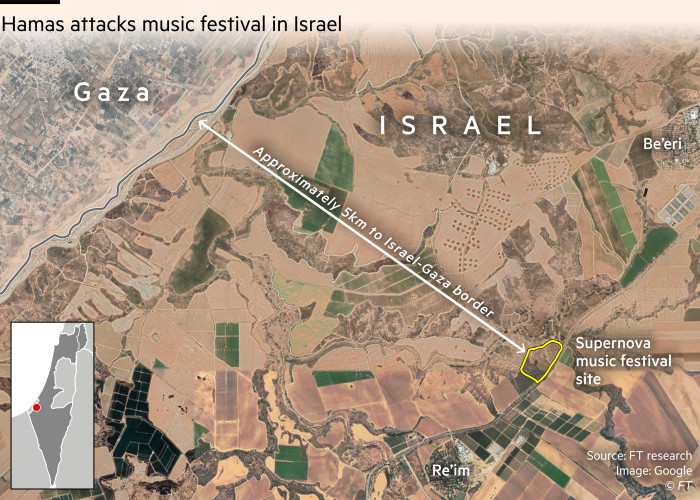
Gunmen chased young Israelis across the desert, shooting and snatching people to take back to Gaza as hostages. The Israeli military failed to respond for hours, apparently caught by surprise by the attack. Hundreds of bodies have been recovered from the site.

After breaching the Gaza fence, armed Hamas fighters began targeting Israeli communities at several locations, going door-to-door and taking hostages.
Images and video show people lying dead in the streets after execution-style killings and residents including women, children and the elderly being taken away.
The Hamas militants also attacked Israeli military sites.
More than 1,200 Israeli civilians and troops were killed, the IDF said — making it the deadliest attack on the country since its foundation.
The complexity of the assault by Hamas was unlike anything Israel has witnessed in decades. It raised serious questions about the security service’s intelligence gathering and the military’s preparedness for an attack.
Israeli prime minister Benjamin Netanyahu imposed a “complete siege” on Gaza on October 9, calling up a record 300,000 reservists and ordering the strip to be pounded from the air.
Israel’s military also ordered the evacuation of 42 communities along its northern border, where Israelis have died after cross-border fire that Israel blamed on Hizbollah or Lebanon-based Palestinian factions — part of the Iran-backed “Axis of Resistance”.
Visual and Data team: Peter Andringa, Steven Bernard, Chris Campbell, Sam Joiner, Lucy Rodgers and Alan Smith




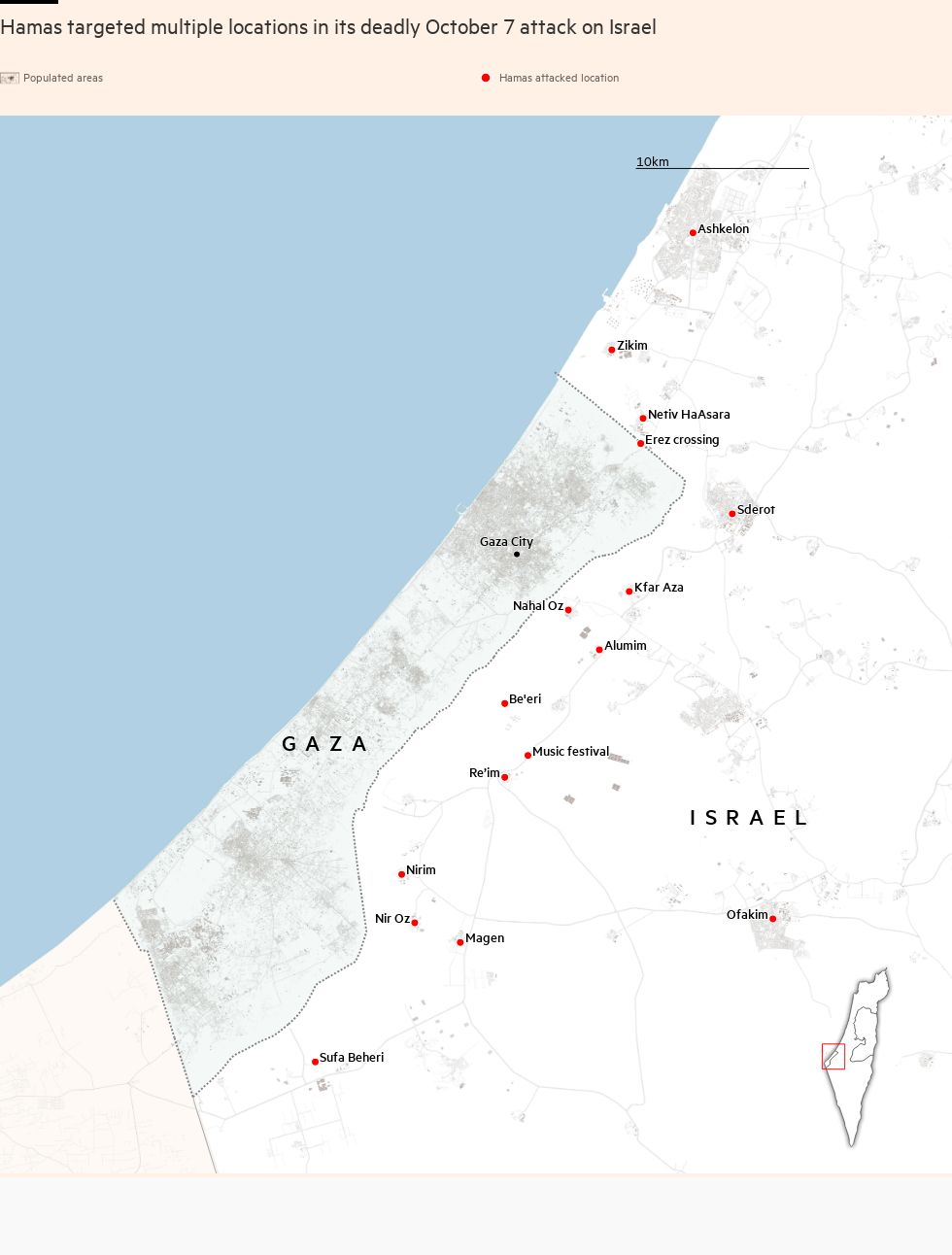
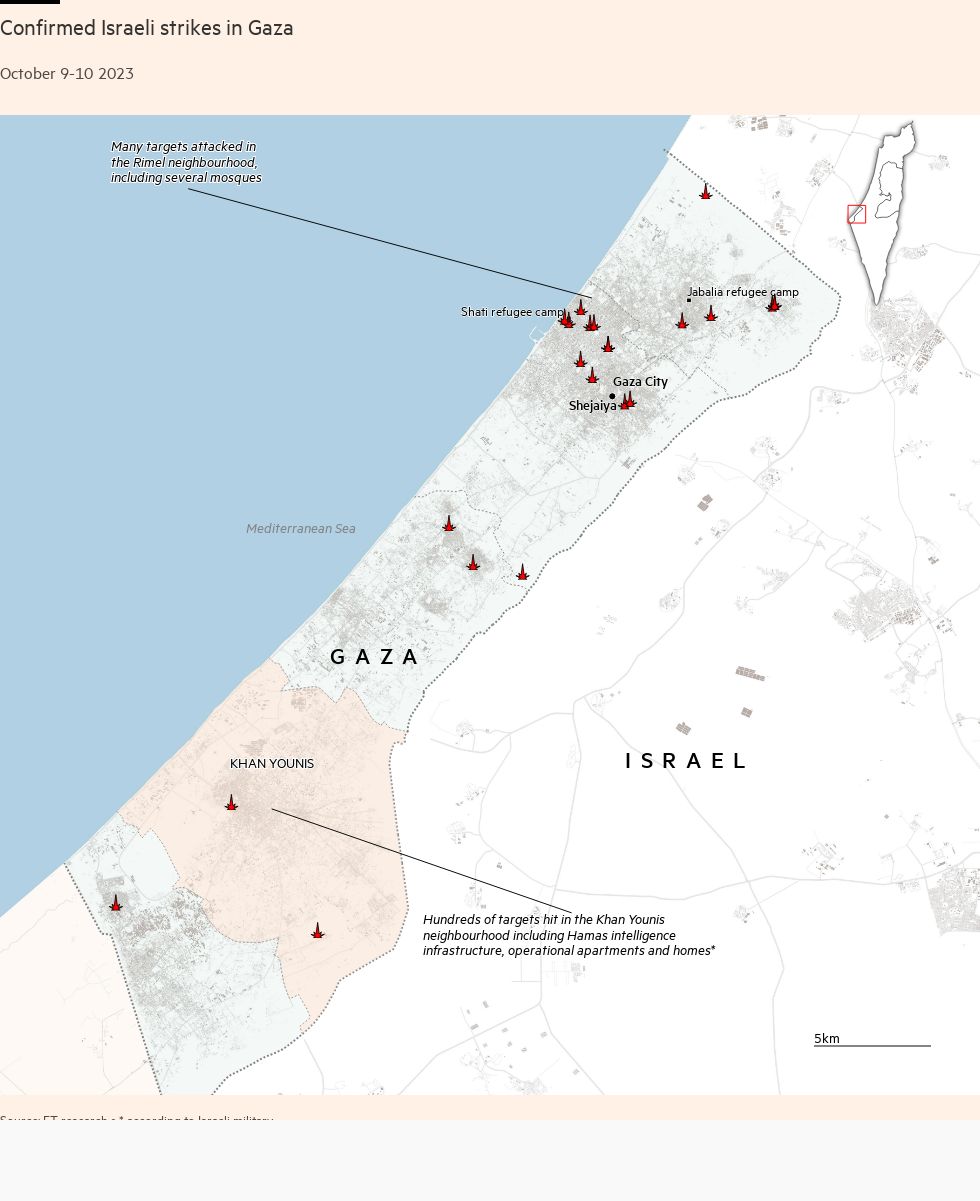
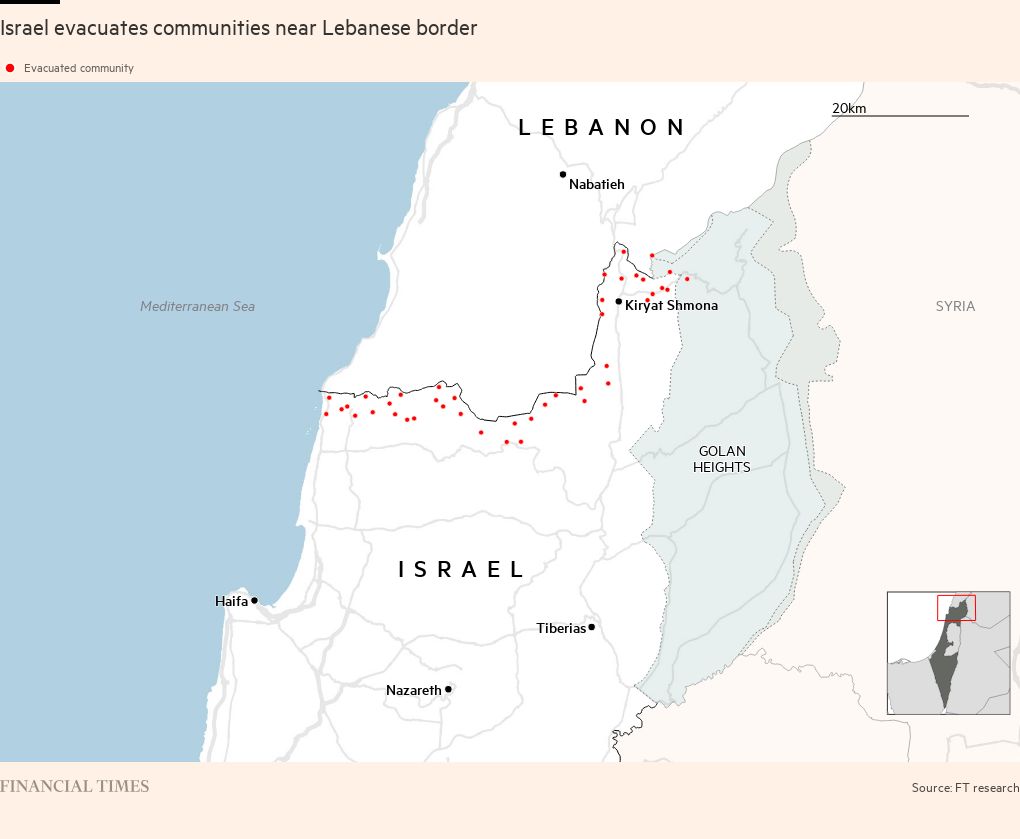
Comments